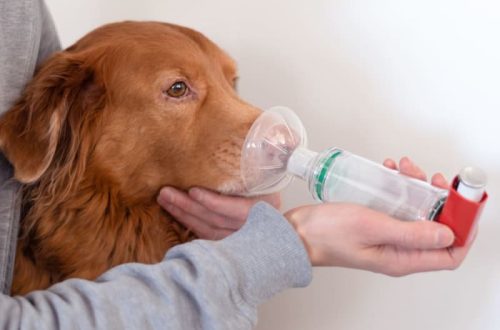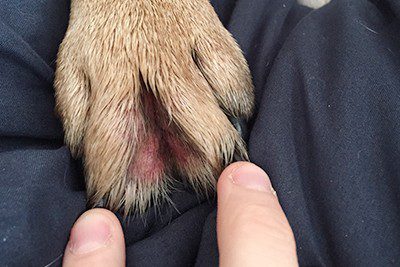
Ascites in a dog (abdominal dropsy)
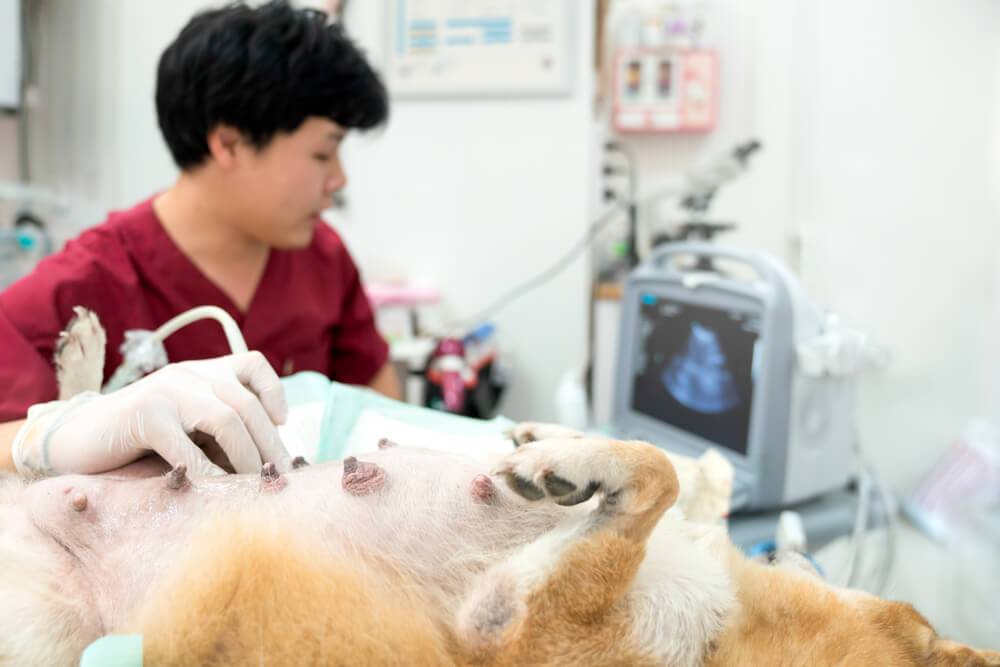
The owner of the animal will be able to suspect this disease on their own — by the volume of the abdomen increasing every day. This is due to the accumulation of fluid in the abdominal cavity. Such fluid can be lymph, exudate, transudate, modified transudate, blood.
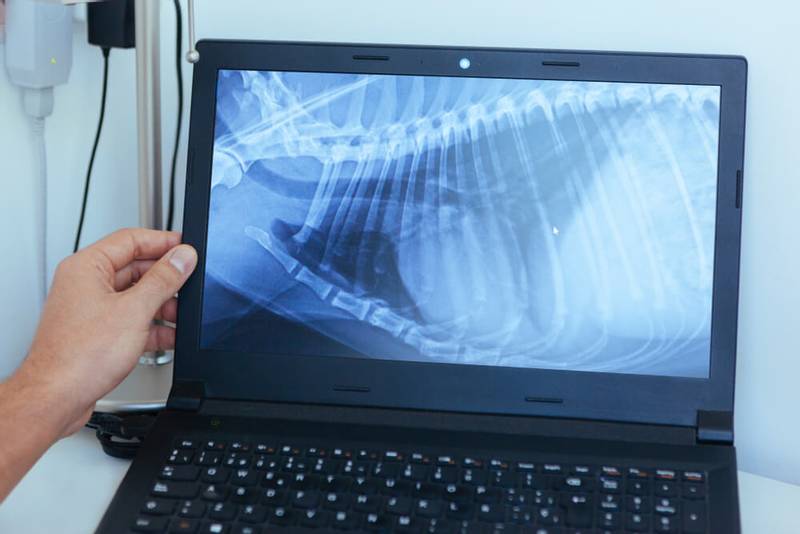
Ascites is considered a pathological phenomenon in which an excessive amount of liquid components accumulates in the abdominal cavity of a dog. Their volume can be from a few milliliters in small breeds and, for non-dangerous reasons, up to 20 liters in large dogs or with abundant fluid secretions. This phenomenon is dangerous for the development of complications, as well as the risk of death.
Contents
Causes of ascites in dogs
Dropsy in dogs can be caused by a variety of reasons. Often it occurs against the background of improper feeding. A decrease in protein in the animal’s diet leads to the formation and accumulation of pathological fluid in the abdominal cavity.
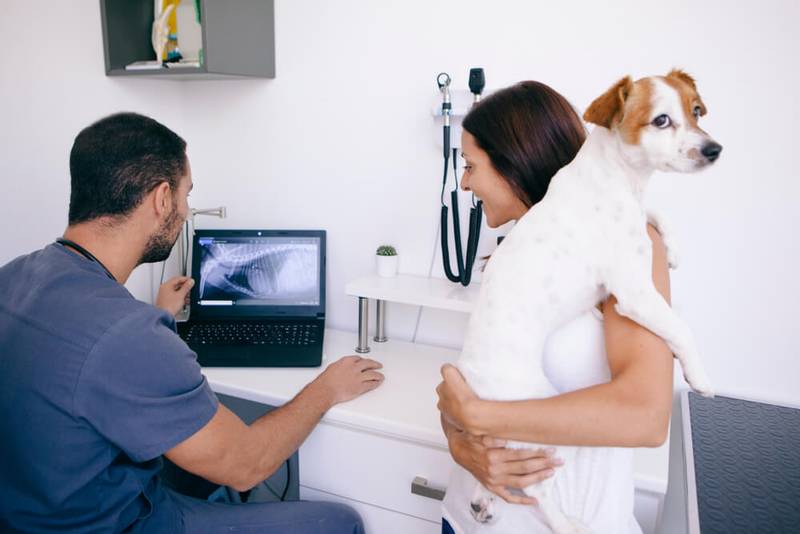
At the same time, this pathological condition is also caused by an insufficient concentration of sodium salts in the tissues of the dog. It is enough to balance the diet — and the pet owner will not face the consequences. However, at least ascites in dogs is caused by more serious causes:
Oncological neoplasms. Most often, malignant tumors provoke ascites, but at the same time, fluid in the abdominal cavity can accumulate from benign in dogs;
Liver pathologies, especially cirrhosis and hepatitis. The consequence of these diseases is a drop in the proportion of protein in the blood serum, which leads to the formation and release of a large volume of fluid into the peritoneum;
Violations of the physiology of the kidneys, as a result of which the processed fluid is not completely excreted from the body. Against this background, additional intoxication of tissues and organs occurs with processed products, toxins, slags, salts;
Anomalies in blood clotting as a result of poisoning, for example, rat poison;
Peritonitis. Inflammatory process in the peritoneum, accompanied by leakage of intestinal contents;
Heart failure, in which liquid fractions are released into the cavity through the thinned walls of blood vessels;
Injuries of internal organs: kidneys, spleen, liver, gallbladder.
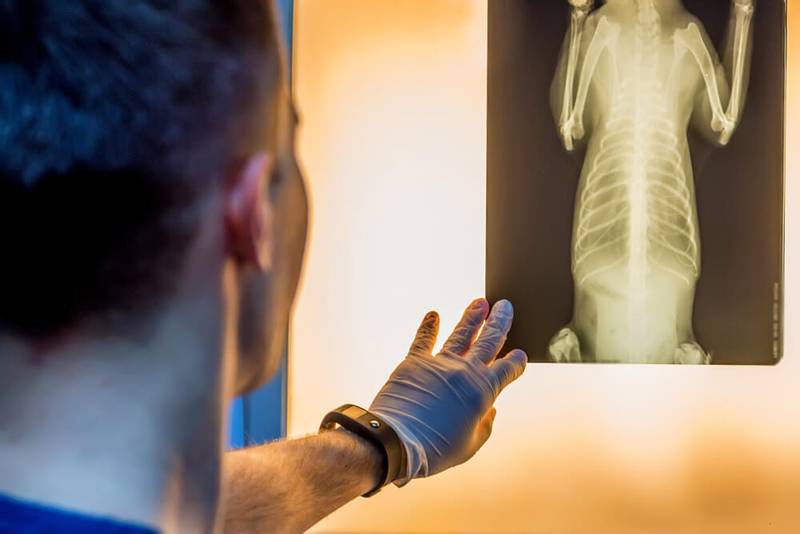
Judging by how diverse the causes of ascites in a dog can be, the differences in the clinical picture are also natural.
Symptoms of dropsy
It is possible to determine and distinguish ascites in a dog even at home by the pet owner himself. To do this, you need to lift the dog by the front paws and observe the shape of the abdomen. In the upright position of the body, the abdomen drops down to the pelvic area and takes on a pear-shaped shape. With other similar symptoms and diseases, this does not happen. Only because of the accumulation of a large volume of fluid, the stomach, along with the contents, becomes mobile. And yet it would be better to make sure that your conclusions are correct and get confirmation by differential diagnostic methods. It also includes a number of characteristic symptoms of ascites in a dog:
Adopting an unnatural posture in a sitting position;
gait disorder;
The appearance of severe shortness of breath even in the absence of physical exertion;
Apathy and indifference to food and walks;
Frequent bouts of nausea;
Difficult defecation;
Due to the lack of oxygen with an abundance of fluid, the color of the mucous membranes of the nose, mouth and eyes changes. They take on a bluish tint.
Due to the increase in the volume of the abdomen, there may be difficulty in the swallowing reflex, difficulties in chewing food.
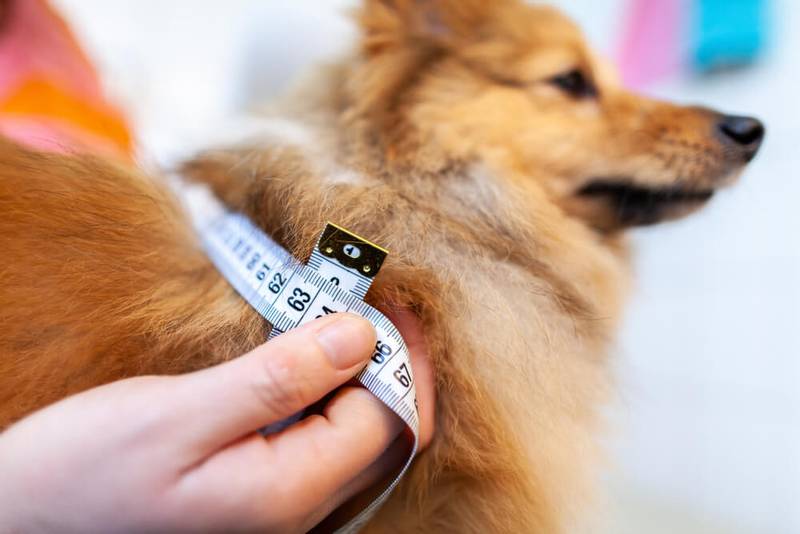
These symptoms of dropsy in a dog may be characteristic of some other diseases, so they should be considered in the context of the overall clinical picture. It is important to establish the root cause of excess fluid in the abdominal cavity. Therefore, it is necessary to take into account the symptoms characteristic of some diseases that cause ascites in a dog.
For example, in the region of the right hypochondrium, in its upper part, soreness, colic may be noted in case of violations of the liver. They can also cause the effect of yellowness of the mucous membranes and even the skin in places with light pigmentation. In case of violations in the work of the kidneys, there will be a copious excretion of urine, along with frequent acts of urination. In addition, in most cases, common signs characteristic of many diseases will be noted. They can be fever, chills, fever, loss of appetite, anxiety.
Diagnostics
If ascites is suspected, a diagnostic study is performed. The purpose of a diagnostic examination of a dog is to establish the true causes of the formation of pathological fluid in the abdominal cavity. At the same time, when making a diagnosis, it is necessary to establish the nature of the fluid — it can be blood, lymph, tissue fluids, transudate or exudate. Therefore, for the correct formulation of the final diagnosis, a set of measures and studies is used:
Clinical examination;
Laboratory research;
Hardware-instrumental methods.
During a clinical examination, if ascites is suspected, the dog’s abdomen is palpated. When you press it, dropsy will be manifested by the sounds of fluctuation (transfusion), the mobility of the abdominal wall, and the rapid restoration of shape. In chronic forms and intensive progression, painful conditions may occur. Visually, there is an increase in the volume of the abdomen. Moreover, the proportions of its shape can be the same. In addition, the veterinarian takes an anamnesis (history of the course of the disease) to determine the likely causes of ascites in the dog.
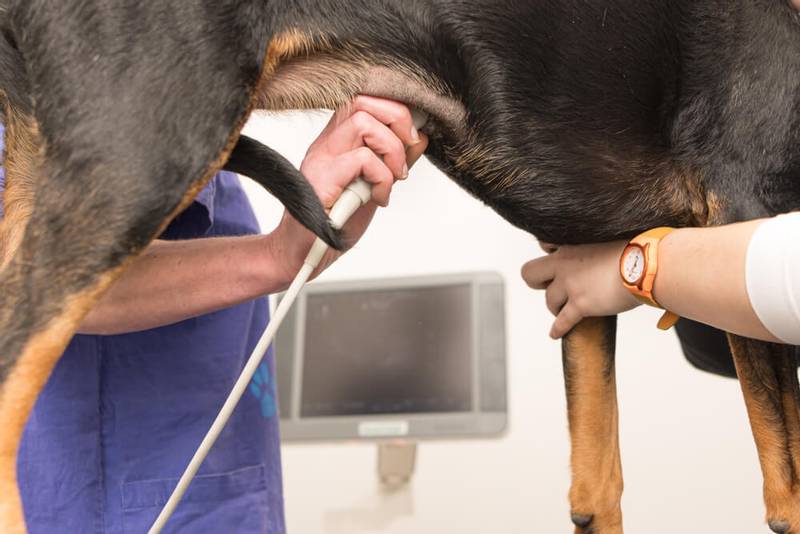
Laboratory diagnostics is designed to determine the nature of the liquid and its contents. This is done through a simple surgical procedure. — puncture (abdominocentesis or laparocentesis). In other words — a puncture of the abdominal wall is made and a fluid sample is taken in a volume of up to 20 ml for laboratory research. In the laboratory, this substance is examined for the presence and amount of protein, impurities of blood components, the presence of infectious agents and products of the inflammatory process. According to these results, the form of the course of the disease is established and its severity is diagnosed.
To confirm a previously established diagnosis, in severe cases, hardware diagnostic methods are prescribed:
Abdominal ultrasound;
radiography;
CT scan;
Magnetic resonance imaging;
Laparoscopy — computer probing of the abdominal cavity and its contents.
Let’s talk about whether dropsy in dogs is treated and what treatments exist.
Treatment of ascites
Treatment of ascites in a dog is carried out strictly with the participation of a veterinarian. It is forbidden to engage in treatment on your own, as this can lead to irreversible consequences. The doctor decides how to treat ascites in a dog, taking into account what caused this pathological condition. Depending on this, the following methods and means of therapy are used:
Laparocentesis — the first stage, aimed at removing fluid through a puncture in the wall of the peritoneum;
Intramuscular injection of antibiotics and anti-inflammatory drugs;
Abdominally (inside the abdominal cavity) antiseptic solutions are injected;
A course of drug therapy with cardiac, painkillers and hepatoprotective groups of drugs is prescribed.
Before the use of the recommended therapeutic agents begins, it is necessary to find the cause that caused the accumulation of fluid in the abdomen. And first you should deal with its elimination, that is, cure the disease itself in order to stop the release of liquid exudate into the abdominal cavity.
After the dog is cured of ascites, he will be able to continue to live a full life.

It is important to remember that specific decisions on how to cure dropsy are made only by a veterinarian based on the results of the diagnosis.
Prognosis for dogs after ascites treatment
With timely seeking veterinary care and preventing the chronic development of primary diseases, the prognosis for the treatment of ascites in dogs is favorable. In some cases, with diseases complicated by infections and chronic forms of the course, as well as with untimely treatment of dropsy in dogs, death can occur.
However, in most cases, ascites in a dog can be cured by addressing the underlying cause.
How to Prevent Ascites in Dogs
Unfortunately, the prevention of this disease — difficult task, given its secondary origin. Therefore, in case of any diseases of the internal organs and injuries, it is necessary to immediately seek veterinary help. At the slightest sign of abdominal dropsy in dogs, you should also take your pet for a clinical examination.
The article is not a call to action!
For a more detailed study of the problem, we recommend contacting a specialist.
Ask the vet
July 9 2020
Updated: February 13, 2021



